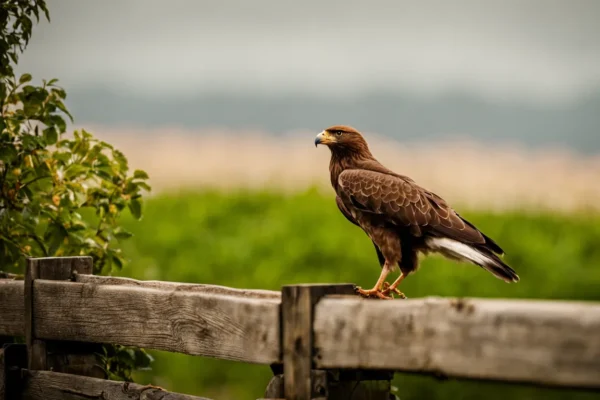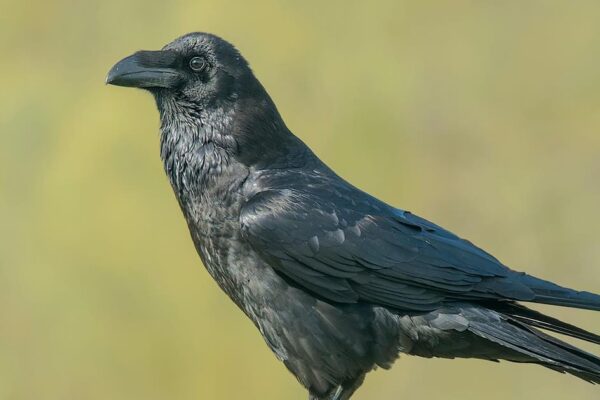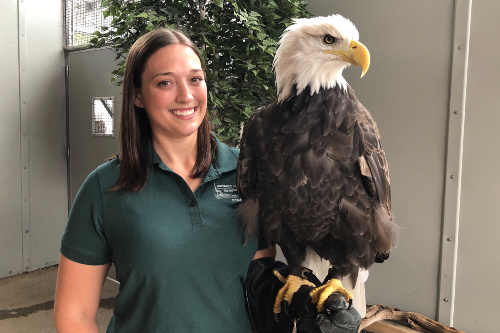Bird viewing often involves opening your senses to the symphony of nature. For those with limited time, the following is a brief response to your inquiry: Some shorebirds, such as the Northern Lapwing, have loud, high-pitched calls that sound like a horse whinnying.
We reveal the birds that amaze with their strange horse-like sounds in this extensive guide.
Some bird species have unique cries that are quite similar to a horse’s whinnying or neighing. This article will focus on birds that frighten with noises like to horses, such as the Golden Plover, Killdeer, and Lapwing.
We’ll look at the causes of their distinctive vocalizations, the situations that set them off, and how they contribute to the birds’ survival. We’ll highlight the sky’s whinniest creatures in nature via evocative narratives and audio samples.
Bird species that sound like horses
lapwings
A species of bird called lapwings is distinguished by its unique sounds, which are quite similar to the whinny of a horse. These mid-sized birds may be found in Africa, Asia, and Europe, among other regions of the globe.
The Northern Lapwing is one species that is well-known for its vocalizations that resemble horses. They may sound like a herd of galloping horses when you hear their cries!
Plovers in gold
Another kind of bird that may replicate the sound of horses is the golden plover. These birds are well-known for their beautiful whistles, which often resemble distant horses neighing. They inhabit a range of environments, such as marshes, grasslands, and tundra.
Hearing these birds’ ethereally lovely sounds, which conjure up thoughts of free-riding horses, is a genuinely unique experience.
Killdeer
Small birds like the killdeer are widespread in both North and South America. They may not sound precisely like a horse whinnying, but they do have a distinctive cry that some people compare to the sound of a horse’s hoofbeats.
They have a high-pitched, piercing cry that is audible over great distances: “kill-deer.” It’s a sound that might take you by surprise and have you wondering whether a horse is around!
Curls
Large wading birds, curlews are distributed around the globe, especially in Europe, Asia, and North America. Some people compare the distinctive vocalization of these birds to the whinny of a horse.
The mystery surrounding these magnificent birds is increased by their sound, a melancholic, eerie whistling that reverberates over wide-open spaces.
Even while these bird species may not be able to mimic horse sounds exactly, there is undoubtedly a similarity in their vocalizations. One of the great marvels of the avian world is the incredible capacity of these birds to replicate the sounds of other creatures.
Therefore, don’t be alarmed the next time you hear a bird cry that mimics the sound of a horse; this is simply nature showcasing its amazing variety!
Goal of Vocalization and Its Triggers
Birds use a range of vocalizations, each with a distinct function, to communicate. These noises are brought on by many events and circumstances in their everyday lives. Gaining an understanding of the motivations behind their vocalizations might provide intriguing insights about their interactions with their surroundings and behavior.
Geographical Exhibitions
Birds often use vocalizations to mark and protect their territory. Whenever a bird sings or shouts loudly, it often does so to mark its territory. This vocalization serves to alert other birds to its presence and discourage would-be invaders.
It sounds like a bird warning you to keep away from its territory. various bird species will exhibit similar territorial displays at various periods of the year, such as during the mating season, and they might vary in intensity and frequency.
Alarm Sounds
Birds can utilize vocalizations to warn other birds or people about possible hazards or dangers in their area. Other birds and animals are alerted to the possibility of a predator in the area by these alarm sounds.
For instance, birds may make a succession of loud, quick sounds to alert their fellow flock members when they notice a hawk or a snake. This facilitates the group’s overall strategy of running away and hiding. It sounds like a bird calling out, “Watch out! Danger is on the way!
Because these warning sounds may be rather different, other birds will be able to recognize the sort of danger and react appropriately.
Courtship
The courting call is among the most intriguing vocalizations seen in birds. During the mating season, male birds will frequently employ complex songs and distinctive vocalizations to entice a partner. These cries are intended to demonstrate the male’s power, stamina, and capacity to support a prospective mate and their progeny.
Different bird species have rather different courting vocalizations in terms of complexity and diversity. Certain birds sing magnificently in duets, while others sing beautifully in solos. It’s similar to a bird purring to a prospective mate, telling them, “I’m the greatest partner you could ever have!””
These courting sounds are very captivating and audible across long distances.
Go to websites like Audubon’s Bird Guide or All About Birds to learn more about the functions of bird vocalizations.
Modifications in Form for Distinct Sounds
Although their melodic songs are well-known, certain birds may also have eerie horse-like sounds. Their ability to generate sounds that closely mimic horse whinnies is made possible by a combination of physical adaptations, which together account for these distinctive vocalizations of birds.
Let’s examine some of these intriguing adaptations in more detail.
Structure of Syrinx
Birds have a special vocal organ called the syrinx that enables them to make a variety of sounds. Birds have their voice cords near the base of the trachea, where it divides into the bronchi, in contrast to mammals, whose vocal cords are placed in the larynx.
Birds can produce more complex sounds and have more control over their vocalizations because to their unique anatomy.
The variety of bird cries is partly attributed to variations in the syrinx structure across various species. While some birds have a more sophisticated structure with numerous pairs of voice cords, others have a basic syrinx with just one pair.
Because of this variance in syrinx structure, birds may make a variety of sounds, including those that mimic horse whinnies.
Voice Resonance
Birds make distinctive sounds with the help of their respiratory system in addition to the syrinx. Air is propelled from the lungs of birds via the syrinx and into the vocal cords when they sing or call. The vocal tract, which consists of the neck, beak, and oral cavity, is shaped and sized, and it greatly influences the sounds that are generated.
The deep, rich sounds of some large-voiced birds—like herons and cranes—are said to mimic the sound of a horse. These birds’ long necks serve as an organic amplifier, extending the range of sound and giving it a more equine feel.
Furthermore, the resonance of the vocalizations may be affected by the beak’s form and the tongue’s placement.
Particularized Beaks
Horse-like noises are mostly produced by the syrinx and respiratory system, although the beak also contributes to the sound’s shape. Horsewhinney-like vocalizations may be heard in the distinctive calls of birds with specialized beaks, including the hornbill and toucan.
The syrinx’s sound is amplified and shaped by the beak, which serves as a resonating chamber. Bird species differ widely in their beak shapes and sizes, which plays a part in the unique sounds they make.
Larger-beaked birds may call with deeper, greater resonance, whereas smaller-beaked birds may call with higher pitches.
Areas Close to the Sound of Horses and Birds Coastlines
One of the areas where horse-sounding bird species are often seen is the coast. Coastlines, with their wide open expanses and varied flora, provide these unusual birds the perfect habitat.
Some birds, such as the Sandhill Crane and Whistling Swan, are recognized for their unusual sounds, which sound like a horse whinnying. These amazing birds are drawn to these coastal locations because they provide the ideal mix of food sources and breeding sites.
You’re in for a treat if you’re fortunate enough to visit a seaside location where you can hear bird noises that resemble horses. Imagine taking a leisurely walk down the beach with the sound of waves crashing in the background, and then all of a sudden you hear the distinct whinny of a bird above.
It’s an incredible experience that really highlights nature’s marvels.
Grasslands
Another area where horse-like bird noises are often heard is grasslands. Numerous bird species with distinctive vocalizations have developed to inhabit these vast, open regions. Across North America’s meadows, one such bird is the Western Meadowlark.
Its unique whinnying sound, like to a horse’s, is part of its melodic song. These grassy areas are perfect for the presence of these birds since they provide plenty of food sources.
It might be strange to stroll across a meadow and listen to a bird’s mesmerizing whinnying. It sounds as if you’ve been transported to another planet where birds imitate bigger beasts’ noises. The variety and adaptability of bird species are well shown by these grassland settings.
Wetlands
Given how abundant with life wetlands are, it should come as no surprise that some bird species that make noises like horses may be found there. Wetlands are a desirable environment for these unusual birds because of the water, flora, and many food sources they provide.
For instance, the cry of the Sandhill Crane, which is located in wetland regions of North America, is sometimes compared to that of a horse’s bugle.
It might be enthralling to explore a marsh area while listening to a bird’s eerie whinnying. A sensation of awe and tranquility is evoked by the rustling of reeds, the sound of horses sometimes calling, and the serene surroundings.
It serves as a reminder of the variety and intriguing life on Earth.
Connections Between Horses and Birds
Even though they may not seem like a good match, horses and birds have some fascinating connections. The theories of convergent evolution, human symbolism, and indigenous stories may all be used to investigate these links.
Convergent Development
Convergent evolution is the process by which unrelated species acquire identical characteristics as a result of comparable environmental stresses. Horses and birds, for example, have both acquired traits that enable them to make comparable noises.
Certain bird species have evolved cries that sound a lot like horses, much as horses whinny. This amazing adaption demonstrates how nature may come up with comparable answers to everyday problems.
Human Symbolism
Horses and birds have both had deep symbolic implications for people throughout history. Birds are typically seen as symbols of flight, transcendence, and communion with the spiritual world, whereas horses are often connected to power, elegance, and freedom.
Because of the association between these two symbols, people often see birds that have a horse-like sound as ethereal or mysterious. We now have a deeper grasp of these birds and their distinctive vocalizations because to this symbolism.
Indigenous Myths
Legends and folklore abound about birds that sound like horses in many indigenous communities throughout the globe. These tales often portray these birds as omens or messengers who bring significant messages from the afterlife.
For instance, the Thunderbird is reported to make a cry that sounds like a charging horse in Native American legend, signifying its strength and affinity with the elements. These myths demonstrate the historical cultural importance and respect shown to these birds.
Examining the connections between horses and birds provides an intriguing window into how the natural world and human civilization are interwoven. These linkages show the complex tapestry of ties that exist between many animals and the human mind, whether via convergent evolution, symbolic meanings, or old traditions.
Final Thoughts
Some shorebirds and grassland species make birdwatchers double-take and grin with joy when they make their high-pitched whinnying cries. Even though they are just birds, their calls strikingly resemble those of their equine counterparts.
Understanding the environments, adaptations, and behaviors that give rise to these whiney marvels sheds light on the enchanted convergences of the natural world.
The vocalizations made by shorebirds such as plovers and lapwings closely resemble the whiny of a horse. Thanks to unusual adaptations like syrinx muscles, these birds employ their horse-like cries for alerts, courting, and territorial displays.
Their horse sounds most likely developed to travel over wide-open environments, like as plains and coasts.





